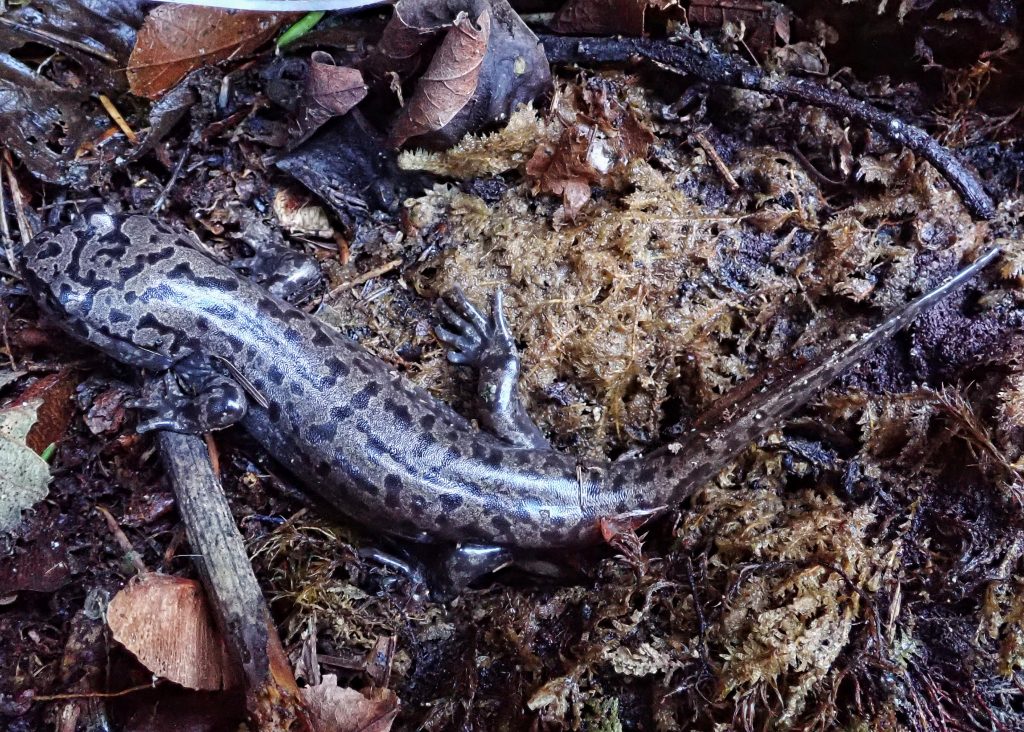
Woohoo! This is a red letter amphibian for me! I’ve been hoping to see one of these for almost 40 years, since before they were elevated to full species status by David Good in 1989 (before then there were only 2 recognized species of Dicamptodon; Dicamptodon copei (Cope’s Giant Salamander) which was not affected by this revision, and one called D. ensatus (Pacific Giants). Now D. ensatus is only assigned to one with the common name California Giant, D. tenebrosous is the Coastal Giant, and D. aterrimus is the Idaho Giant). These members of the family Dicamptodontidae are the heaviest terrestrial salamander in the PNW, and tied with Ambystoma mavortium (Western Tiger Salamander) for the longest. This one wasn’t close to the full grown size possibility of 13”, but it was at least 9”. That’s a big ‘mander!
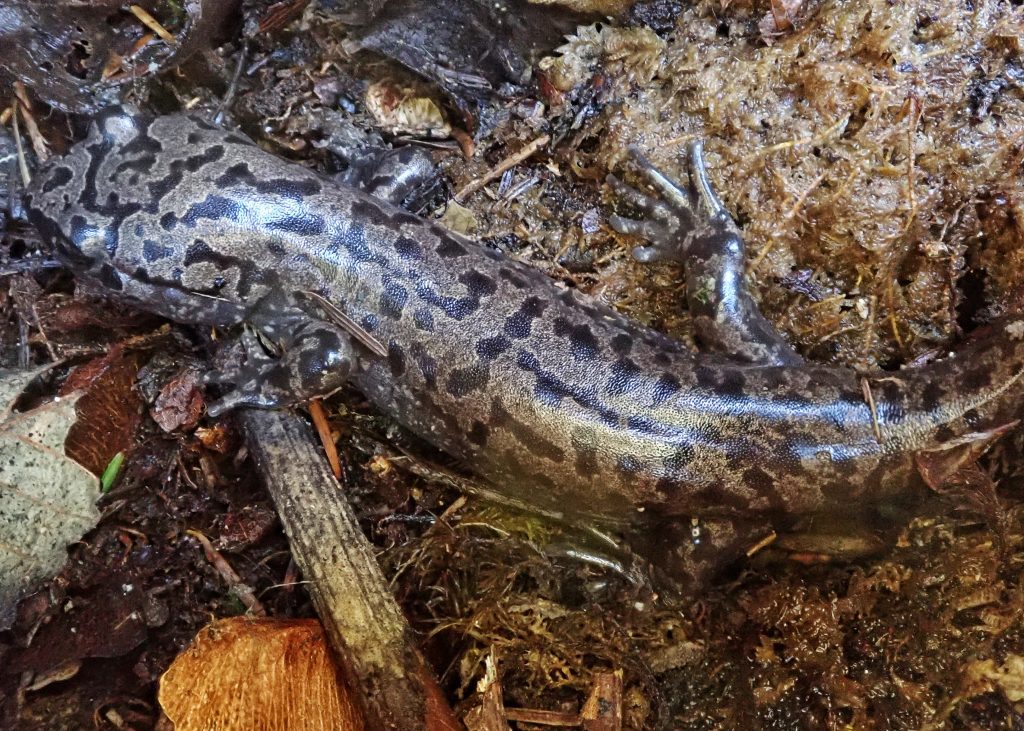
And the coolest find yet from the Cliff. Well, technically from the steep runoff gully that splits off the western flank of the cliffband. But one of the things that make these cliff bands so intriguing is the diversity of micro habitats that they encompass and create.
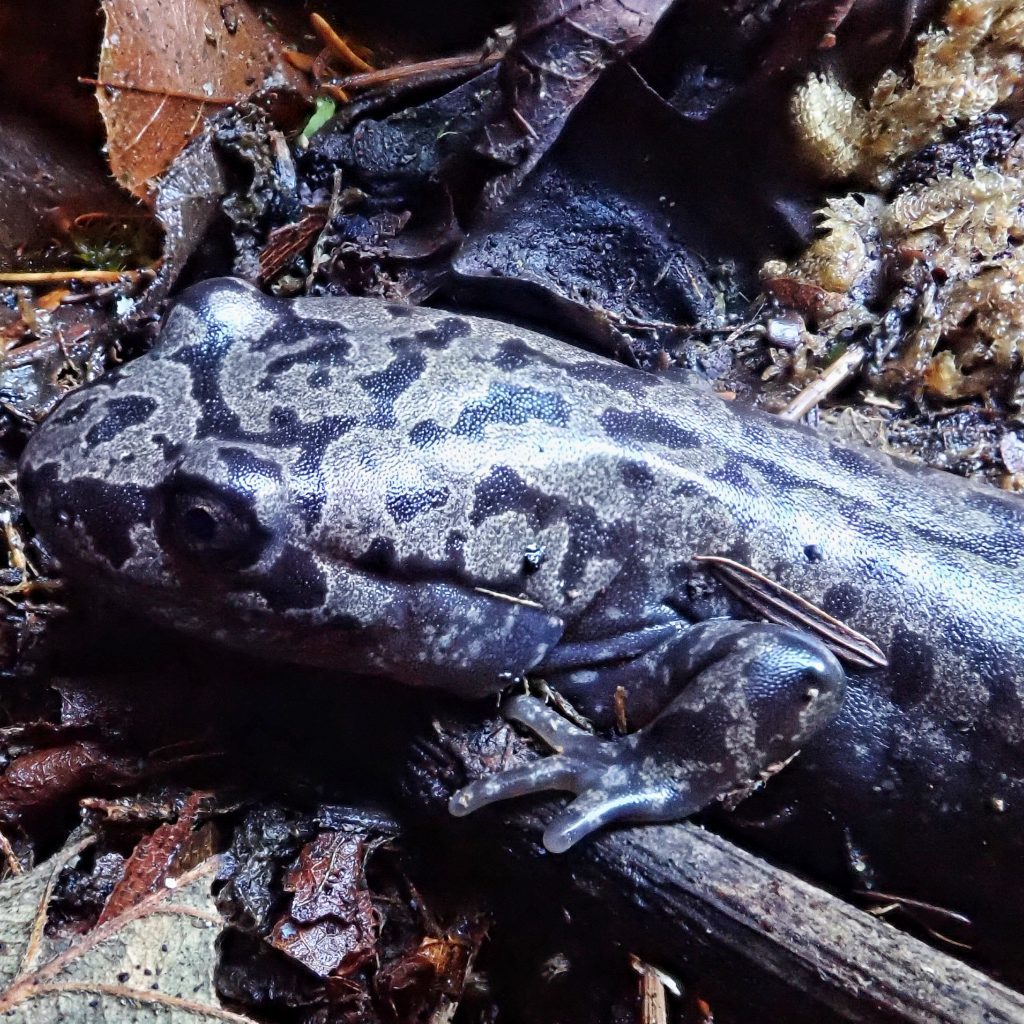
I hooted when I lifted the log and saw it, but unfortunately it didn’t growl at me. That’s right! They often emit a croaking growl when harassed, rare vocalization from a salamander. But I didn’t get to hear it. Maybe I was just too dang happy to seem threatening.
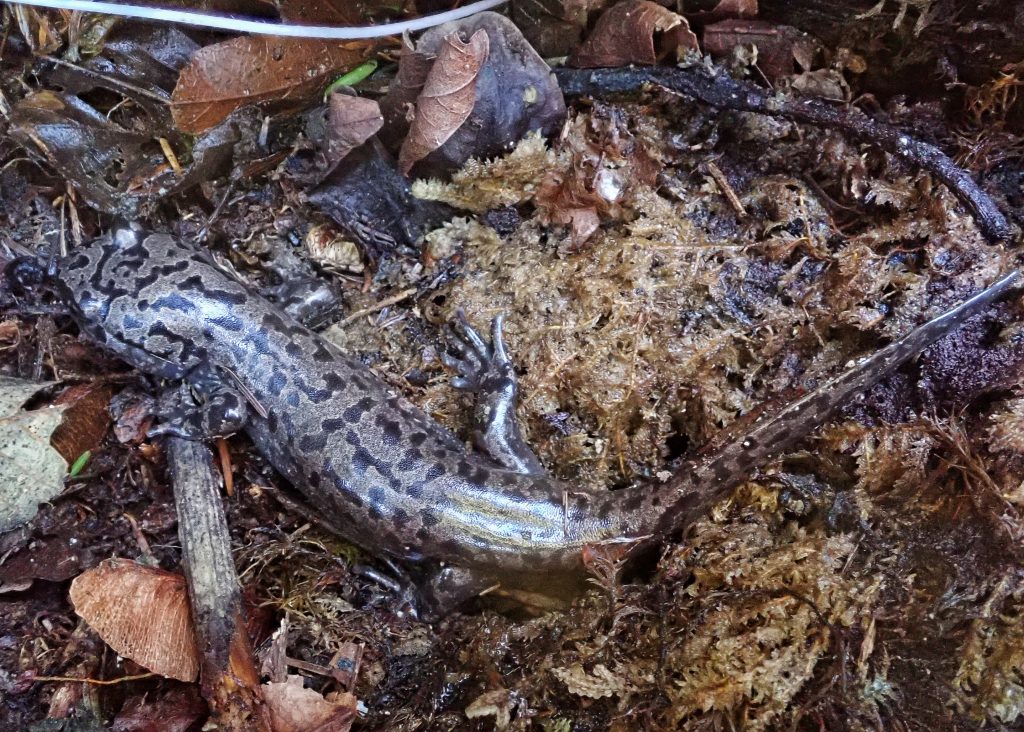
This species often exhibits neoteny, retaining a gilled larval form and an aquatic lifestyle into adulthood. They tend to do so more often in permanent streams with good year around flows, and to transition to a terrestrial form around streams that run out of water periodically. The stream that this particular metamorphosed salamander was 10’ from has the look of one that doesn’t flow year around.
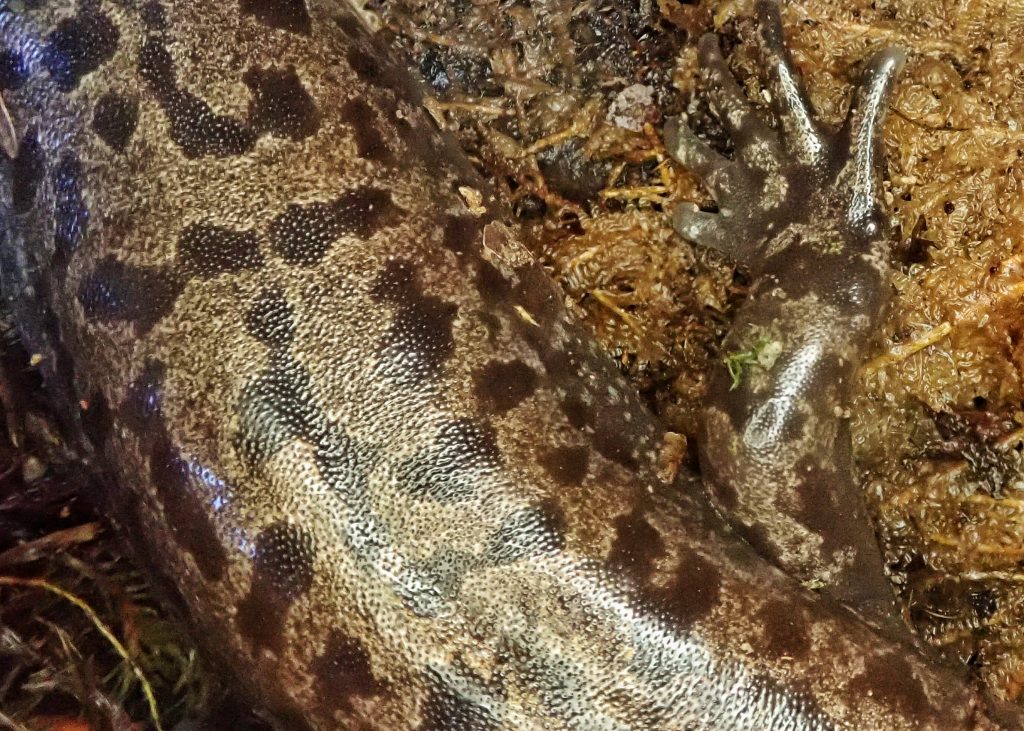
Courtship and breeding hasn’t been observed in this species, but fresh eggs have been found from fall until spring. Females attach eggs individually (in clutches of up to 200 eggs) in submerged and concealed locations within the stream bed, and guard those locations until the larvae hatch. Populations can apparently be quite heavy in the right locations, and they may be the most abundant vertebrate in many streams.
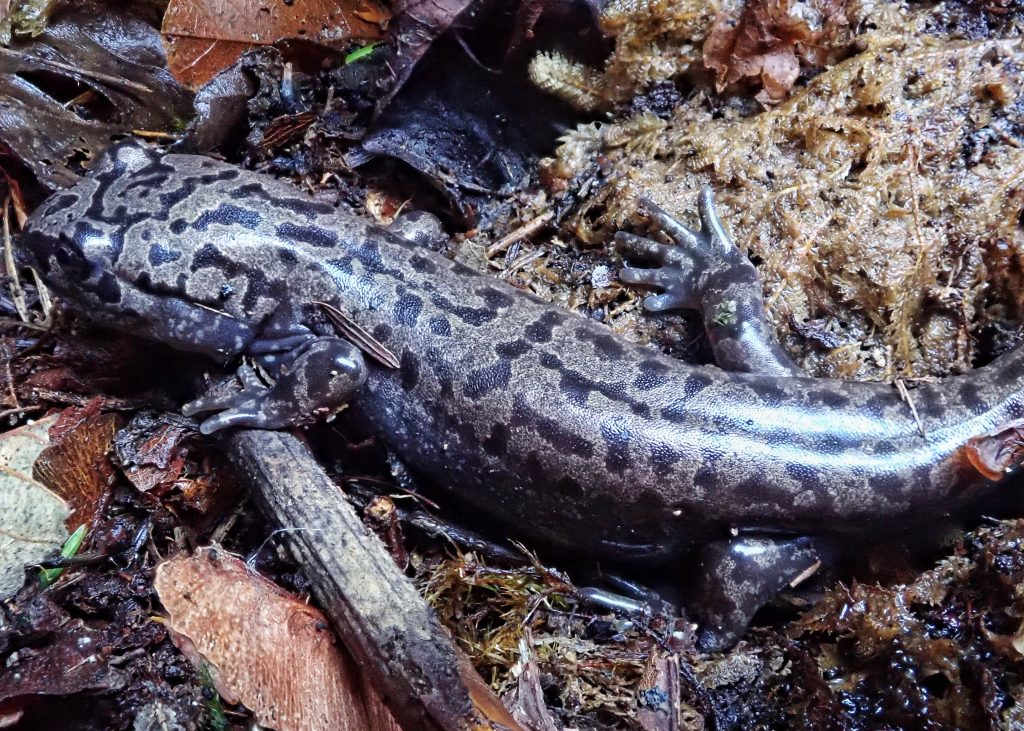
This beautiful creature eventually tired of my observation, and moved under another log in the pile. I carefully replaced the one it had been hiding under, and did a little jiggy dance. I found this salamander the day before my 60th birthday. What a way to end what had been, by far, the best decade of my life. And it makes its appearance here as the 150th species I’ve profiled for this project. Only 9850 to go, and I’m looking forward to finding and chronicling each and every one of them.
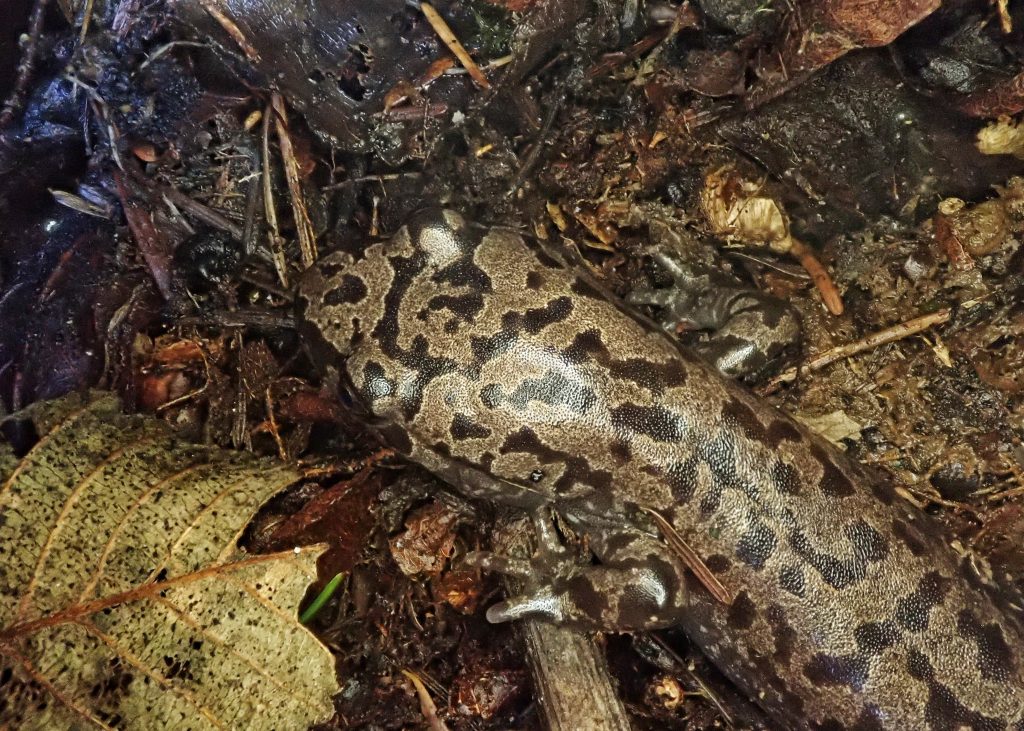
Description-Large (up to 7.5” snout to vent, and 13” including tail) mottled brassy gray and brown salamander, with a large head, robust body lacking conspicuous costal grooves, stout legs, and a stout, keeled tail. Undersides are unmottled, albeit speckled, gray. Neotenic adults have gills and are similarly patterned, and may even be slightly larger.
Similar species– D. copei (Cope’s Giant Salamander) are almost always neotenic, have a narrower head, and thinner, longer legs; Ambystoma gracilis (Northwestern Salamander) have conspicuous costal grooves, are uniformly colored, have obvious parotid glands, and are much less robust.
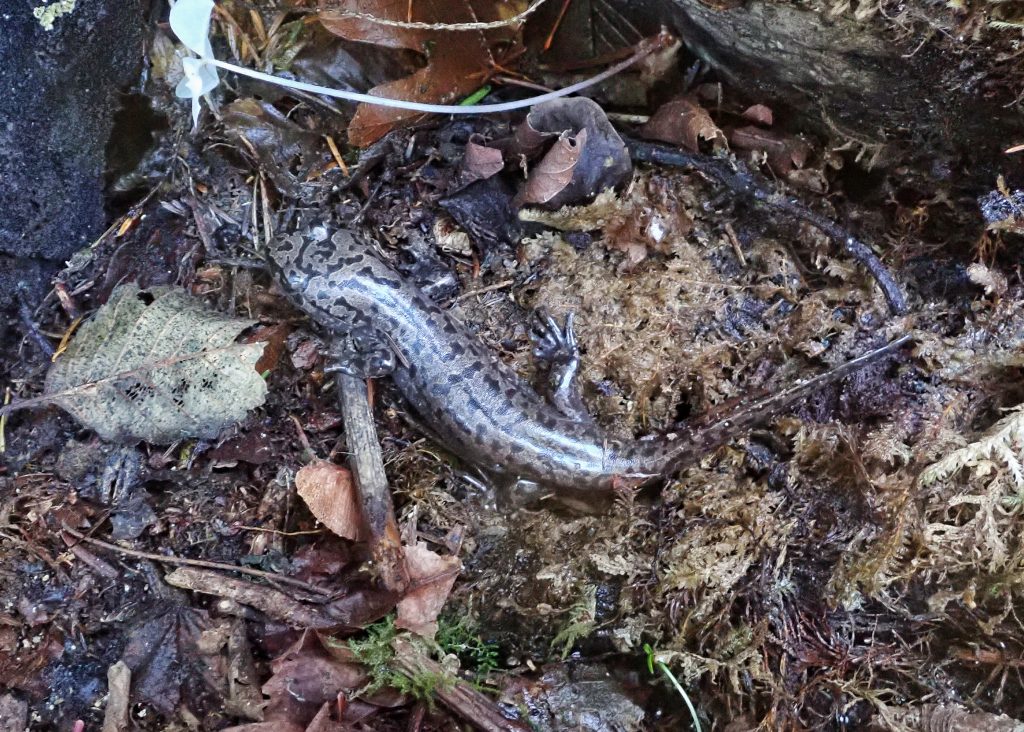
Habitat– Dense mixed,or conifer dominant, mesic forests with watercourses or ponds at low to middle elevations.
Range-West of the Cascades, except the Olympic Peninsula.
Eats– Anything it can subdue and get in its mouth. A road killed specimen was found to have 4 snails and an entire shrew in its stomach.
Eaten by– Probably any carnivore that can subdue them, which includes raccoons, otters, trout, salmon, garter snakes and other Dicamptodon. They do not have parotid glands, but do exude noxious skin secretions, and they are formidable fighters. And they vocalize, which is probably a bit disconcerting to a prospective predator.
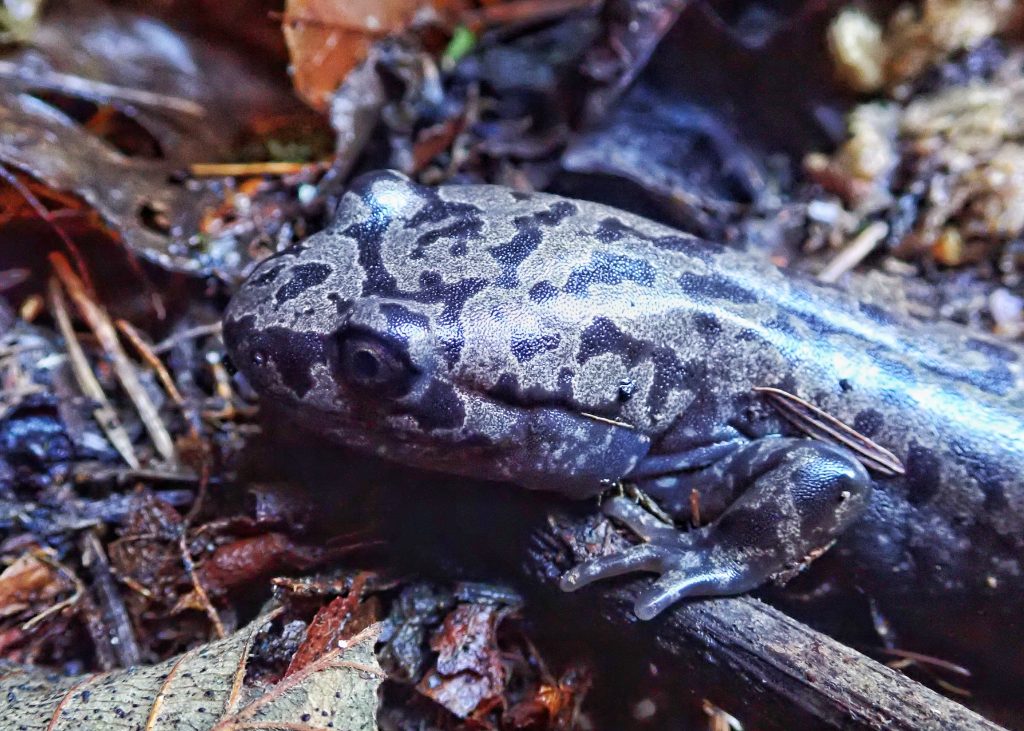
Adults active– Year around, though they are often deep underground regardless of season.
Etymology of names– Di-campt-odon means ‘dual, flexible teeth’ and appears to refer to the compressed, blade like teeth of this family. The species epithet tenebrosous mean ‘dark, gloomy’ and probably refers to the deep shade of the conifer forests they inhabit, or the fact that they spend much of their life underground, or that if they are above ground they are usually under logs or other cover, and usually only roam freely in the dark. But all of those conditions apply to many salamanders, so I really can’t say for sure.
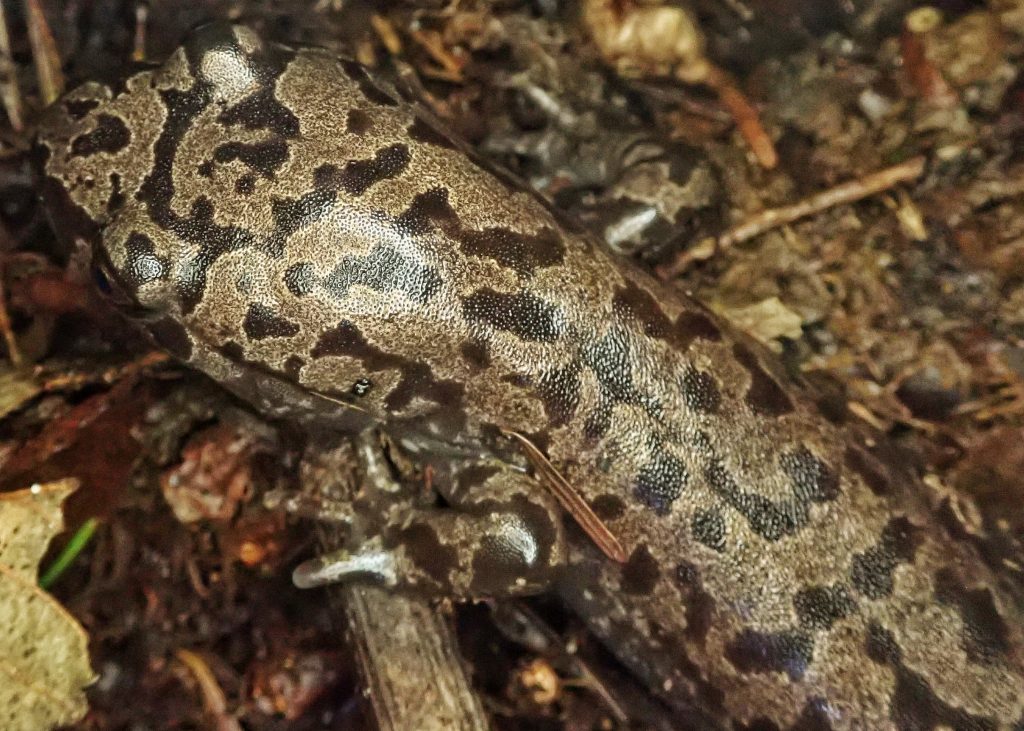
https://animaldiversity.org/accounts/Dicamptodon_tenebrosus/
http://www.californiaherps.com/salamanders/pages/d.tenebrosus.html
https://en.m.wikipedia.org/wiki/Coastal_giant_salamander
https://amphibiaweb.org/cgi/amphib_query?where-genus=Dicamptodon&where-species=tenebrosus
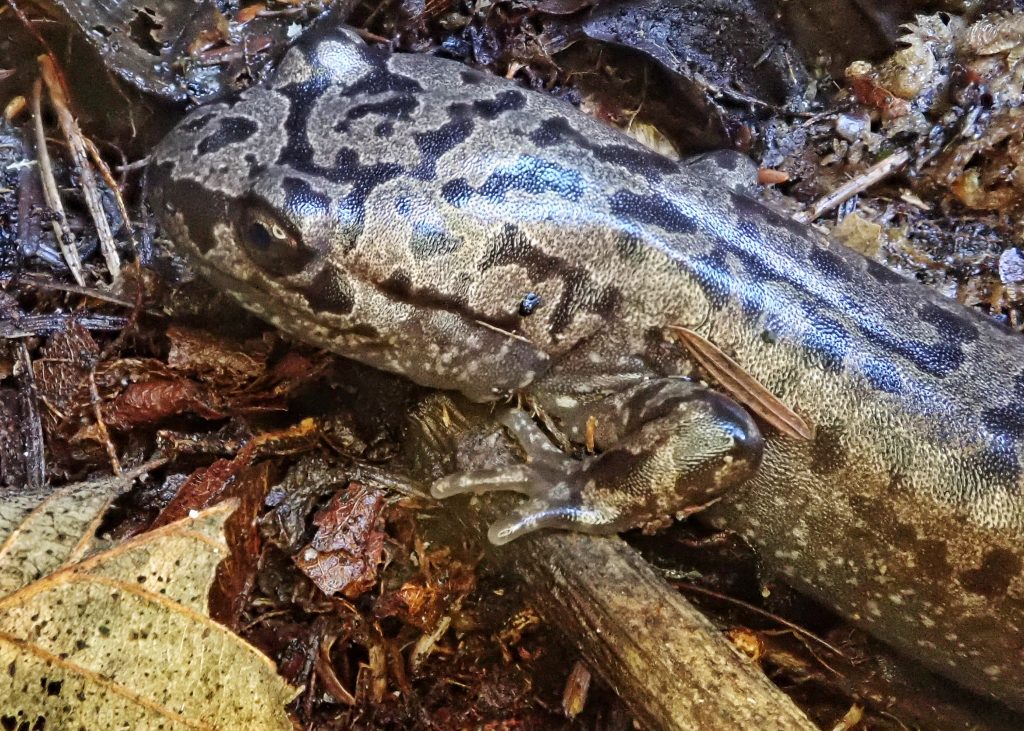
Happy Belated Birthday, Dan. You bring much of interest and value and good cheer to this FB group and I’m glad you got such a great 60th birthday gift!
Thank you, Sharon!
Very fun to read! Glad you finally found your ‘mander! 🎉👍